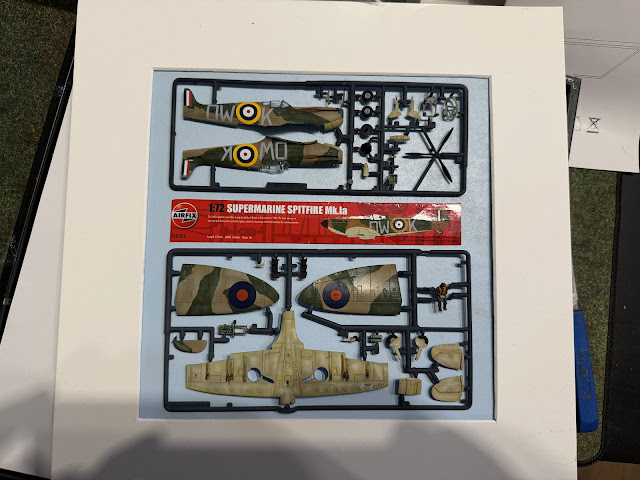When I bought my Matchbox Monty's Caravan at the IPMS Show in Gloucester recently, I also treated myself to the Tamiya 1/35 SAS Jeep kit from the same seller.
This vintage kit was only £5 and I couldn't resist it. Originally released in 1974, I've actually assembled this kit twice before......but I wouldn't dare share the pictures with you! Once when it first came out and I was 12, the next time was probably from my mid to late 20's, which looked a little better.
I clearly remember the review in Military modelling highlighting some of the model's deficiencies....
- Lack of hose from radiator condenser
- No German pattern Jerrycans
- Jerrycans only having two handles instead of three
- Rolled cam net lack of detail
- Sand channels moulded together
- Wrong model of Browning MG (they include a .50" where I think the real vehicles mounted .303" ex-aircraft guns)
I sprayed the 6 wheels in a dark rubber grey and then sprayed the hubs in Light Stone using a stencil.
Then careful application of water, a stiff brush & cocktail stick gave me the well worn effect I was after.
Once they were all dry I grouped them together and, using microstrip, constructed frames to hold them together in the vehicle. the half dozen or so famous wartime photographs of these jeeps widely available on line give you plenty of inspiration.
I also took a look at the rolled cam nets. These had a criss-cross pattern moulded in that wasn't at all convincing. To mask this I first tried multiple coats of Mr Surfacer 1500. This helped but was a slow process. Next I tried liquid Greenstuff, but this was no quicker. Finally I coated them using Vallejo Grey Pumice (a basing texture) which worked a treat!
The hose question was easily answered using a short piece of brass rod. The condenser was heated with a flame to distort it slightly to mimic the ones seen in the photos.
I painted all the stores (Ammo boxes, ration crates, small arms, shovel etc.) separately and then test fitted them in the jeep. Once I'd picked out the jeep hull details (dashboard etc) I glued them all in place.
I think the figures aren't too bad. The poses are quite natural compared to many Tamiya figures of the time, and well proportioned. Ok the details is a little soft, but nothing that a good paint job can compensate for.
Before final assembly, everything was given a coat of ultra-matt varnish to seal and blend everything together. The base was 3D Printed to match. The surface area was artists medium with scattered sand, followed by sprayed coast of various sandy shades. Some grass tufts just finishing things off.





































































